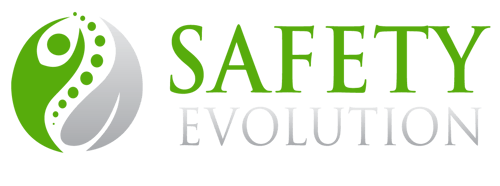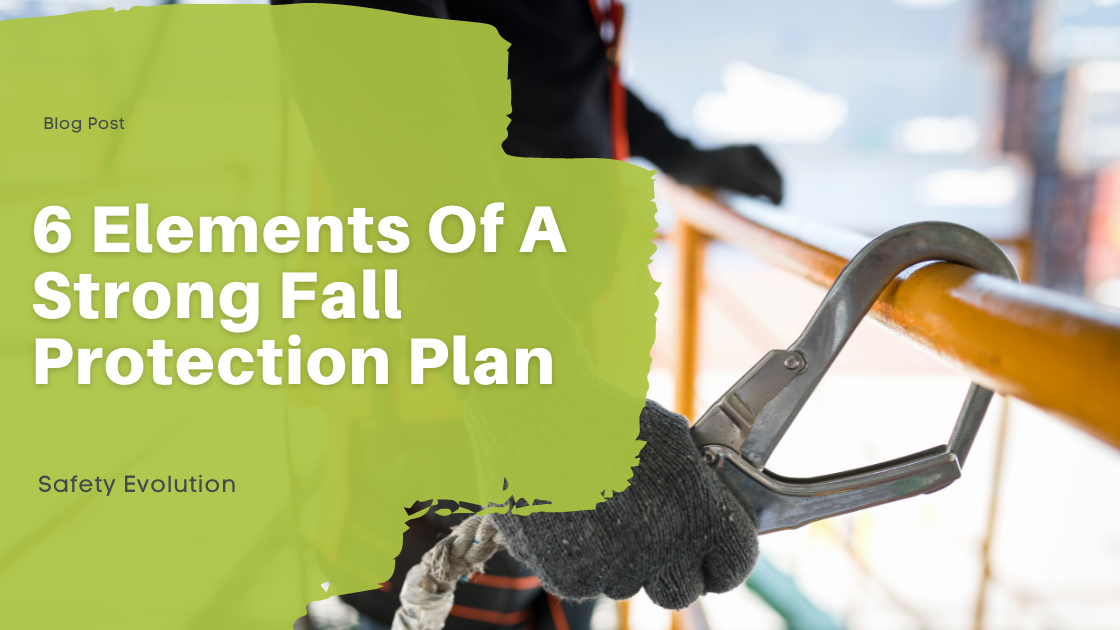Fall protection ranked highest as the #1 OSHA Violation in 2022. The 2023 priority for every EHS professional should be to ensure that your worksite is OSHA compliant and your workers are protected from injuries caused by falls!
A written Fall Protection Plan is a “must” because:
- It is the key to establishing a consistent standard of safety when workers are in danger of falling from heights,
- It must be developed to meet OSHA Standards (29 CFR. 1926.502(k).)
- It will provide a procedure and a formula that can be easily repeated.
Encourage your workers and supervisors to participate in the development of your company’s plan.
The importance of developing a strong fall protection plan can’t be emphasized enough. In our earlier blog titled “Top 5 OSHA Violations in 2022, Is Your Team Aware?” we stressed the need to Make a Plan, for the Plan!
First, let’s move through the “how-to” list step by step to be sure your Fall Protection plan is OSHA compliant and then, cross-check that your plan contains all the required elements
NOTE: The Form Designer in Safety Evolution Software is a great tool for developing your Fall Protection Plan. It provides you with a one-time build, continuous access and document retention. Our Risk matrix automatically ranks uncontrolled and controlled risks.
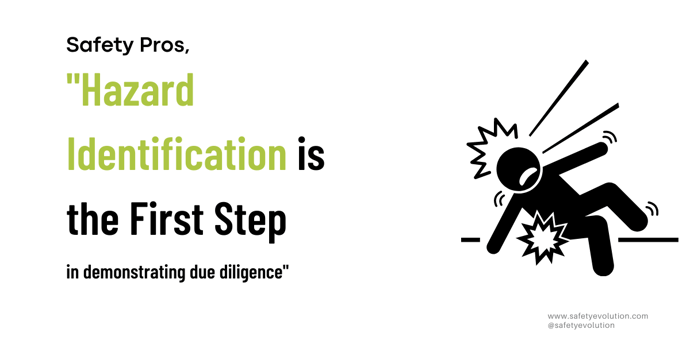
Element 1: Assessing the Hazards for the Fall Protection Plan
Hazard identification is the first step in demonstrating due diligence and is always the first step in any safety plan. For general industry, OSHA requires fall protection beginning at a height of four feet. In construction, fall protection is required above six feet. Protection must also be provided any time an employee must work above hazardous equipment or machinery, regardless of the distance.
Start developing your Fall Protection Plan with a written description of your worksite. Where are your workers at risk of falls? Include the following for potential fall hazards:
- overhead platforms,
- elevated workstations or
- holes in floors and walls.
Look beyond the usual “high fall risks” listed above and include unique site-specific risks and those that evolve with changes in the workplace. Remember, falls from one level to another account for the majority of deaths caused by slips, trips, and falls.
What about those “one of” situations that result from removing a barrier? Encourage input from supervisors and workers who can draw from their personal experiences with unique fall hazards.
Use your company’s Risk Matrix to rank each hazard as it is identified.

Element 2: Preventing The Fall When It Comes To Fall Protection
The three lines of defense for the prevention of injury caused by falls are Elimination, Engineering and Personal Protective Equipment. The Hierarchy of controls below shows each line of defense from most effective to least effective.
HIERARCHY OF CONTROLS
For the purpose of your Fall Protection Plan, you may use one control or a combination of controls to provide the most effective protection for your workers.
- Elimination: The first line of defense is always asking “is there a safer way of completing the task?” Can the work be done or materials stored at lower levels so workers won’t be using ladders or elevated platforms?
- Engineering: The second line of defense makes changes to the workplace. When falls from heights cannot be avoided, guardrails are an example of engineering controls
- Personal Protective Equipment: Known as the “last line of defense” specialized PPE is used to protect the worker if a fall occurs.
- Personal Fall Restraint Systems combine engineered control and PPE.
Fall hazards evolve with changes in the workplace. Real-time hazard assessment Vigilance and awareness. Monitor for ongoing hazards.
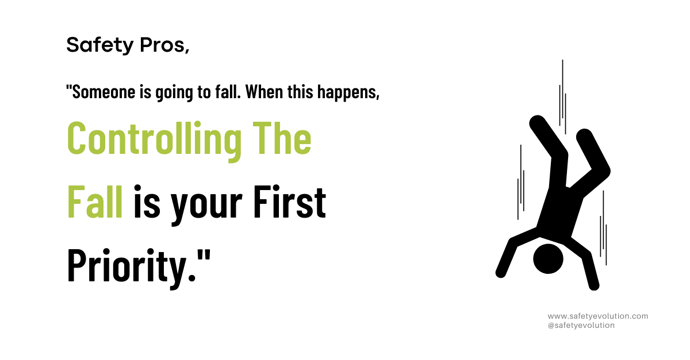
Element 3: Controlling the Fall
Remember, even with diligently addressing the fall hazards on your worksite and putting the most effective controls in place, someone is going to fall! When this happens, controlling the fall is your first priority.
A PFAS (personal fall arrest system) must be used when workers need to be mobile or work near edges. Some systems may require a self-retracting lanyard (SRL) or an SRL rated for leading edge.
OSHA standards for PFAS include these three options:
- 3.7.1 Fall arrest system incorporating a lanyard and energy absorber.
- 3.7.2 Fall arrest system incorporating a lanyard and energy absorber on a horizontal line.
- 3.7.3 Fall arrest system incorporating a retractable type fall arrester.
You will use this written plan to control a potential fall in every hazardous area of your worksite so build out a form that includes the information below.
- Start with the formula for calculating the potential drop and the equipment criteria that must be used to prevent a worker from reaching the ground. Include this formula and diagram in your written Fall Protection Plan
- length of the lanyard
- length of shock absorber
- harness stretch plus D-ring slide
- Height of worker
- Safety factor
- Add a) to e) for the overall minimum clearance distance
- Describe the location of your anchor point and calculate the distance from the anchor point to the ground.
- Include your rescue plan, the names and contact information for the rescue team
OSHA Fall Clearance Distance - Shock-absorbing Lanyard or Retractable Lifeline

Element 4: The Written Fall Rescue Plan
When the inevitable happens, and a worker falls, it is CRUCIAL that a rescue plan is in place. Is important to understand the effects of trauma during suspension as well as after a fall victim has been rescued.
Time is of the essence! Serious injury or even death can occur when a worker is suspended in a harness for any length of time. OSHA allows for a 30-minute window to complete the rescue, so begin the rescue immediately. Do not rely on emergency services!
Having a written, trainable plan in place is vital. You will want to ensure that these key points are addressed in your rescue plan:
- Limit suspension time. Your number one priority is to rescue the worker from the harness as quickly as possible, to prevent suspension trauma. This trauma is caused by the femoral arteries being crushed by the leg straps of the harness and blood pooling begins in the lower body. This can rapidly lead to loss of consciousness or even death.
- It is an upright suspension that has the most serious risk. Include steps that a suspended worker can take to reduce the risk of suspension trauma. The use of a trauma strap allows the fallen worker to stand upright in the harness. When this this strap is not available, there are other ways that the worker can help avoid suspension injury
- adopting a sitting position,
- moving to a horizontal position,
- use legs to push off from a hard surface or
- pumping legs to maintain blood flow.
- The worker may be unconscious or injured and not able to assist in the rescue. Special measures will be needed to bring this worker to safety.
- Ensure that the equipment and manpower required for all possible scenarios are included in your plan. Have the necessary equipment and “manpower” available for speedy deployment.
- Have names and contacts of the rescue crew available. Delegate someone to call emergency services as soon as a fall occurs.
https://ohsonline.com/Articles/2017/01/01/Suspension-Trauma.aspx?Page=1
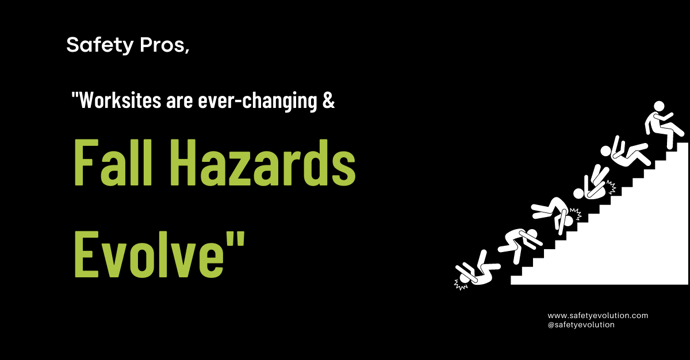
Element 5: Employer Inspections
Worksites are ever-changing and fall hazards evolve. Your Fall Protection Plan must have a regular and ongoing procedure to monitor fall hazards.
Daily hazard inspections should always address the risk of falls and include effective controls.
The controls that have been put in place to prevent falls must also be inspected! Include guardrails, barriers, handrails, grates and the permanent anchor points for PFA and PFR systems.
Workers must inspect the components of their personal fall arrest equipment prior to use. Care should be taken to identify deficiencies in webbing, D-rings, lanyards, etc.
It is recommended that monthly documented inspections by a qualified, trained inspector be conducted on the components of PFA and PFT systems.

Element 6: Train on Proper Fall Protection Practices
The final element of the Fall Protection Plan is Training! Workers who are required to work at heights and/or to wear personal fall arrest equipment must be trained and certified by a qualified trainer. This is often conducted by third-party trainers.
Don’t assume that workers know more than they do! Many workers arrive at the job site with certificates in hand but have no experience with fall protection controls or fall arrest equipment!
Ongoing training is vital.
Take all the components of your Fall Protection plan and ensure that your workers have a clear understanding of each element.
- Make sure they are informed of the fall hazards at their present worksite and what type of fall protection is used to mitigate each one.
- Revisit the pre-use inspection and donning and doffing of personal fall arrest equipment.
- Discuss the measures to use to prevent suspension trauma and how the rescue plan will proceed. It is important that all those working at heights understand what to expect during the rescue process.
- Review the OSHA standards that relate to fall protection in your industry.
REMEMBER the #1 OSHA Violation in 2022 is Fall Protection! Keep your workers safe and your site OSHA-compliant with a well-developed Fall Protection Plan.
Takeaways:
- OSHA regulations may differ from one industry to another, but keeping workers safe by minimizing the risk of falls with a written, reviewed and easily trainable Fall Protection Plan is a “must-do”.
- Fall protection is an essential part of work that needs to be integrated into every phase of the day-to-day job scope.
- Check out our complete list of the Top 5 OSHA Violations in 2022
To learn more about how you can have one central location for your workers in the field to access all the material for your Fall Protection Plan effortlessly, click the link below!
Subscribe to the below for more weekly content digging into all things Health and Safety!
